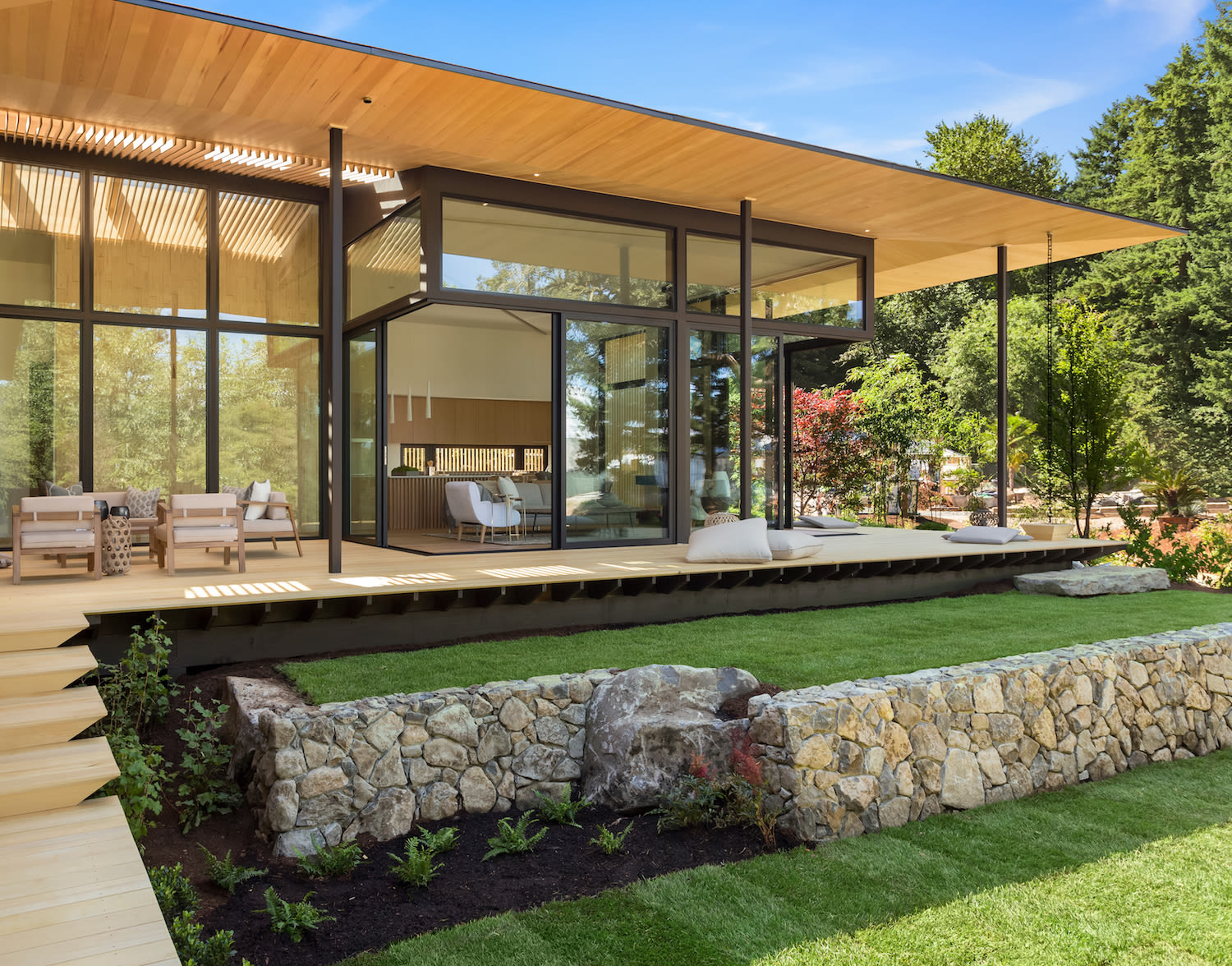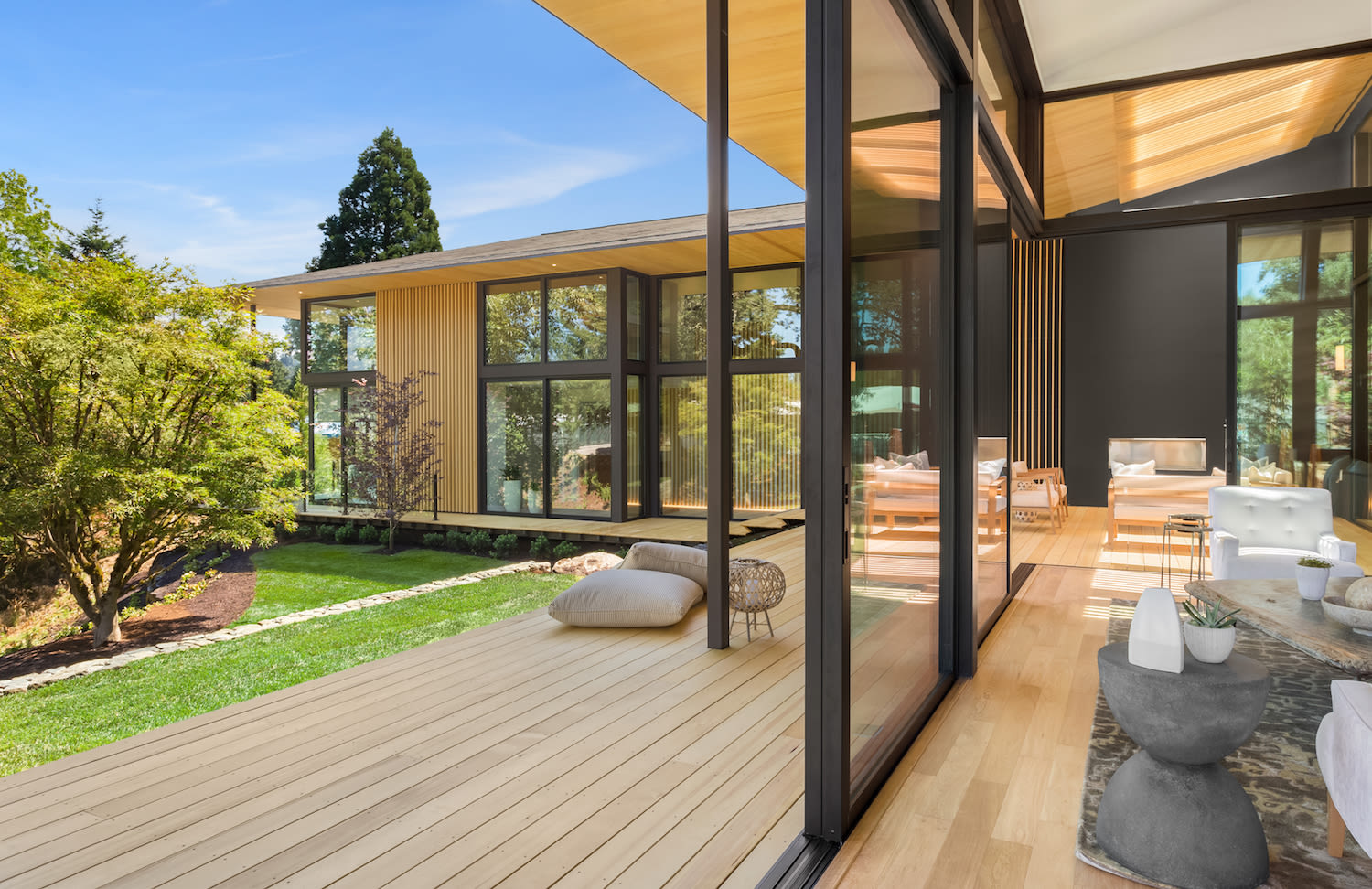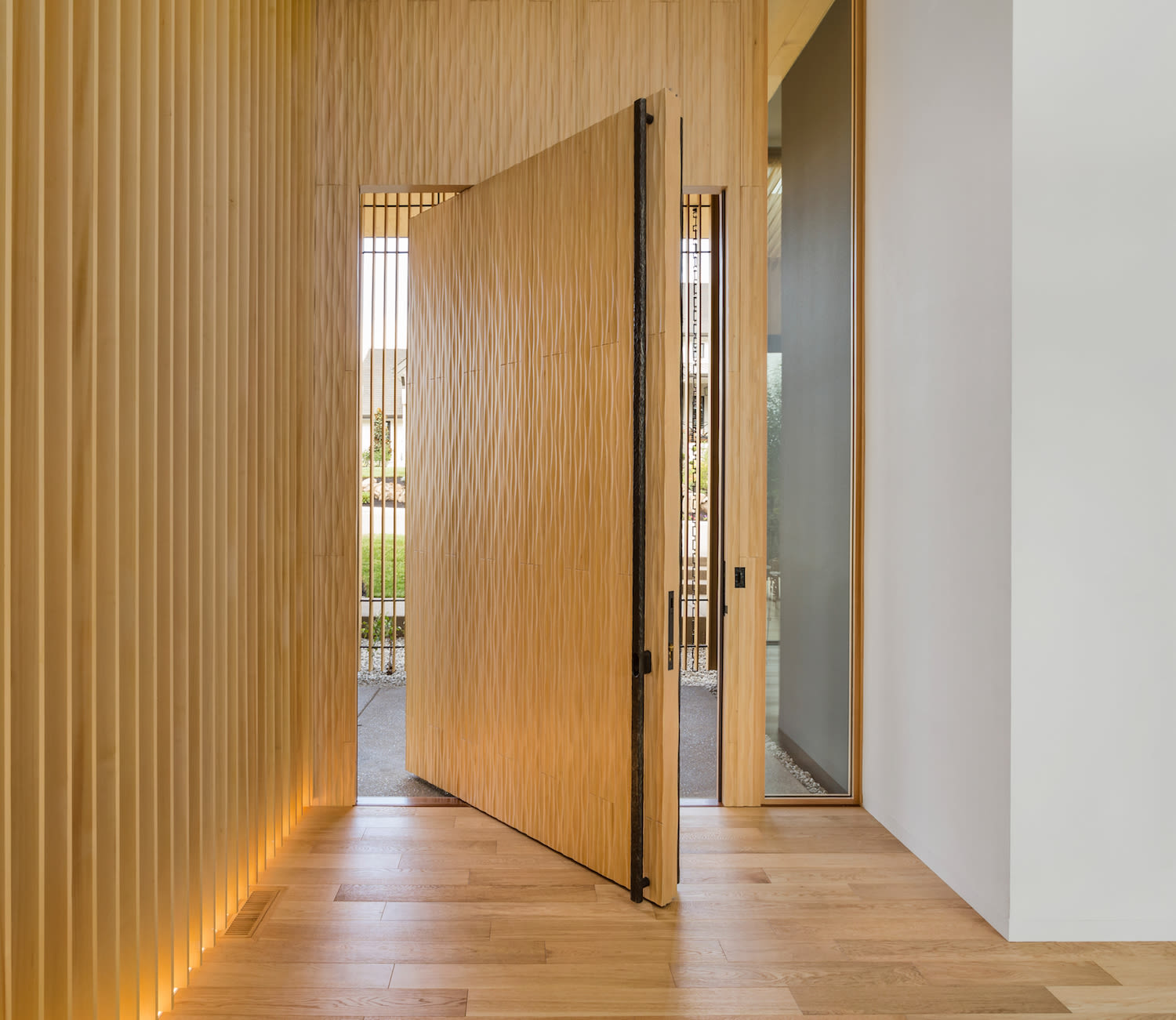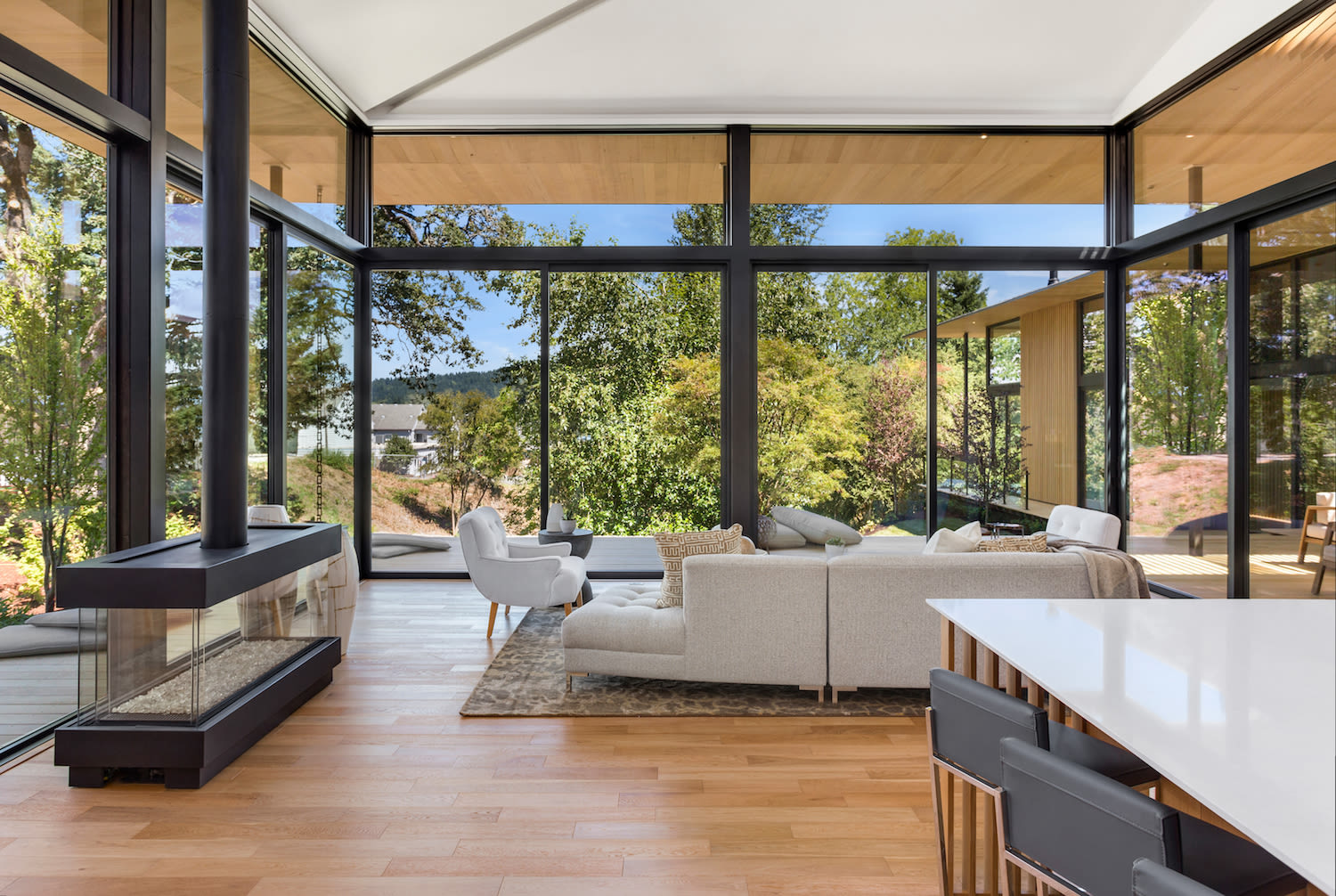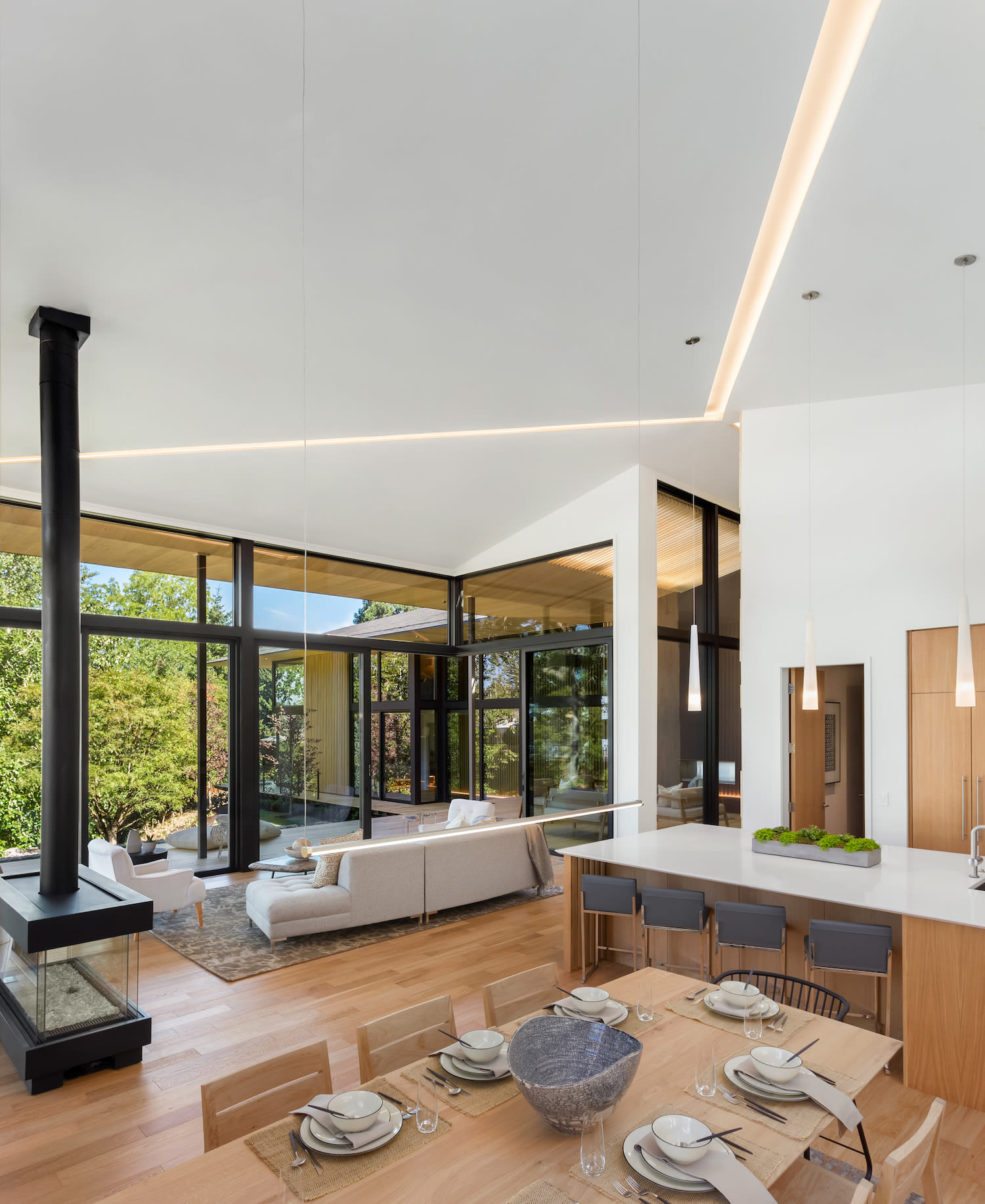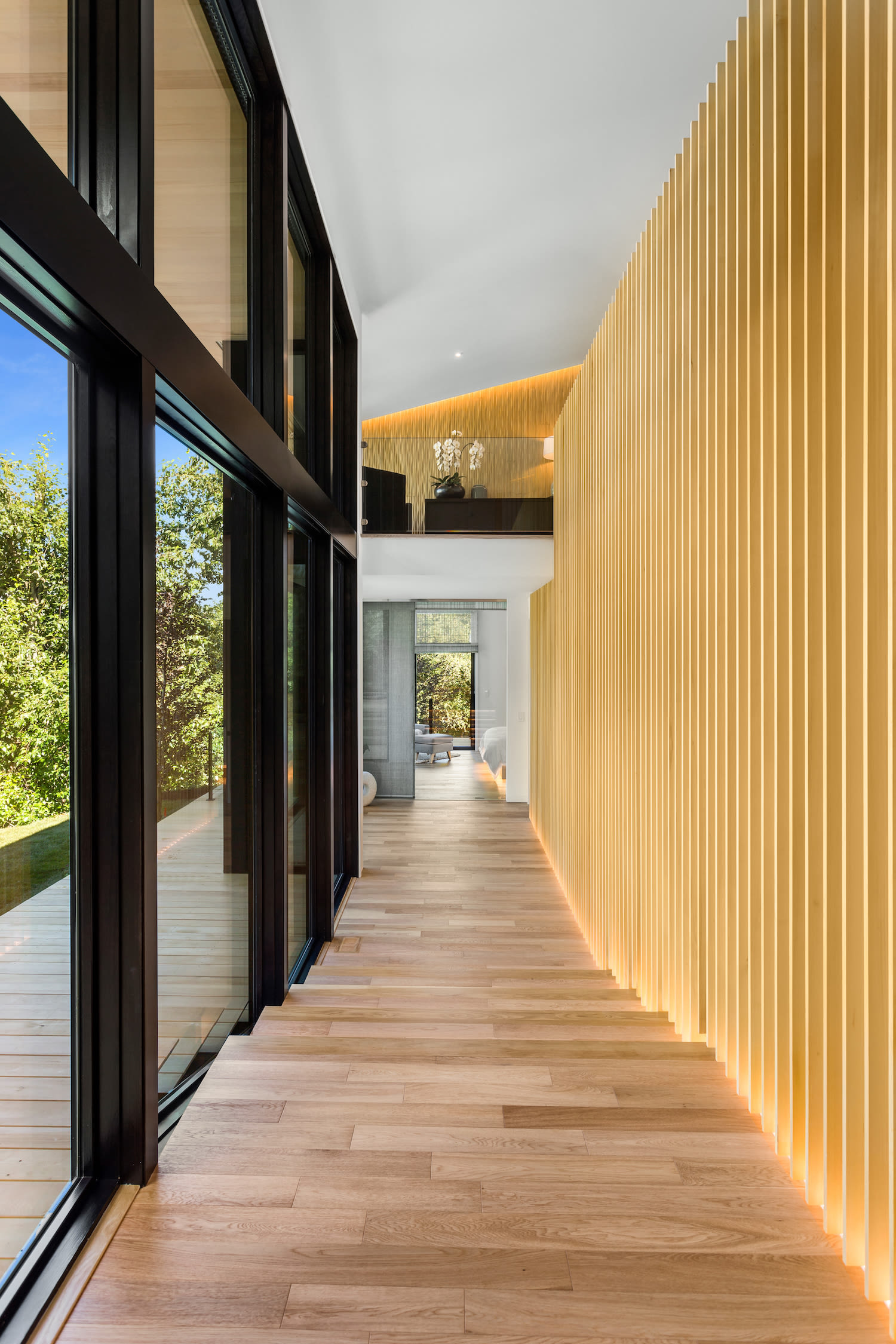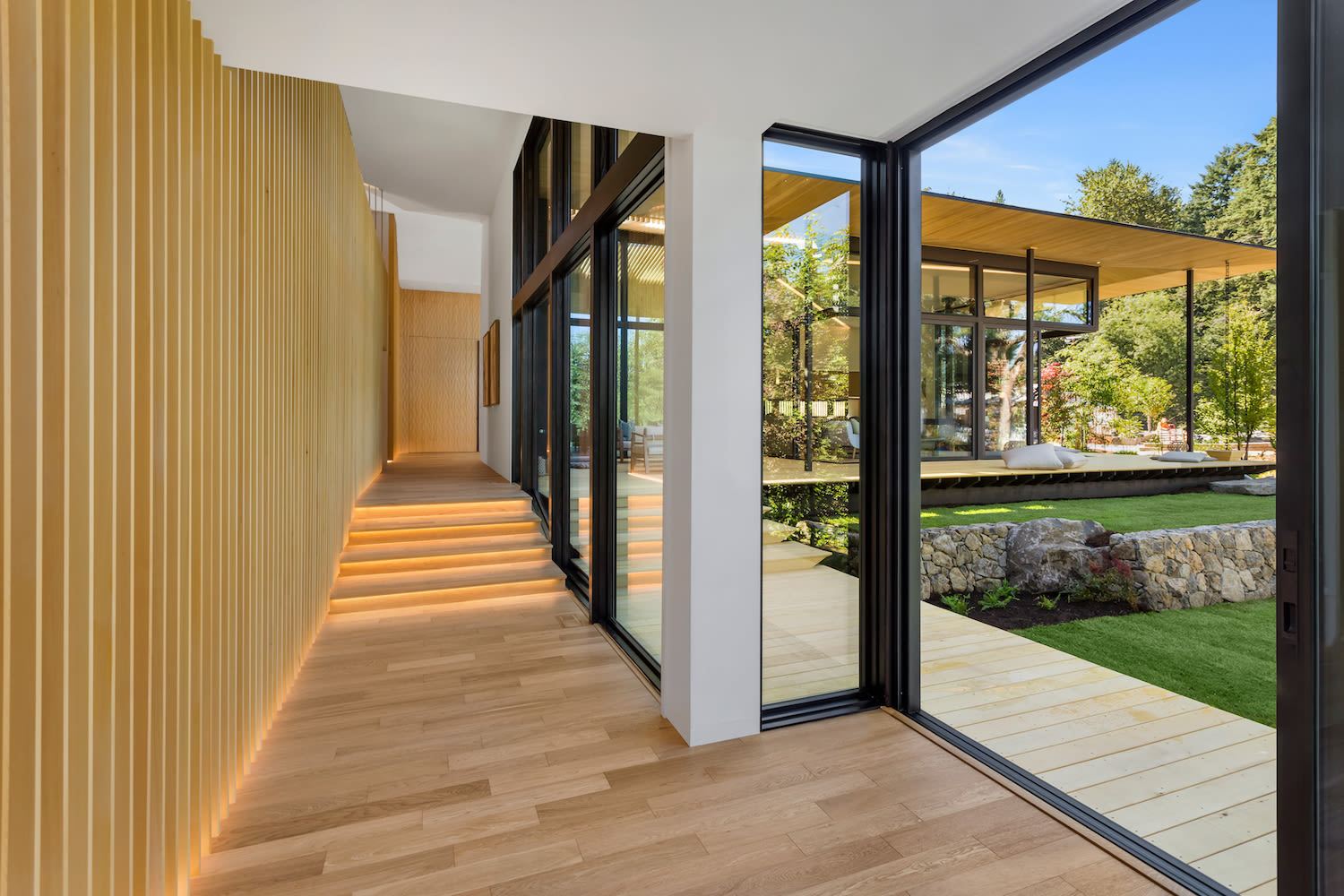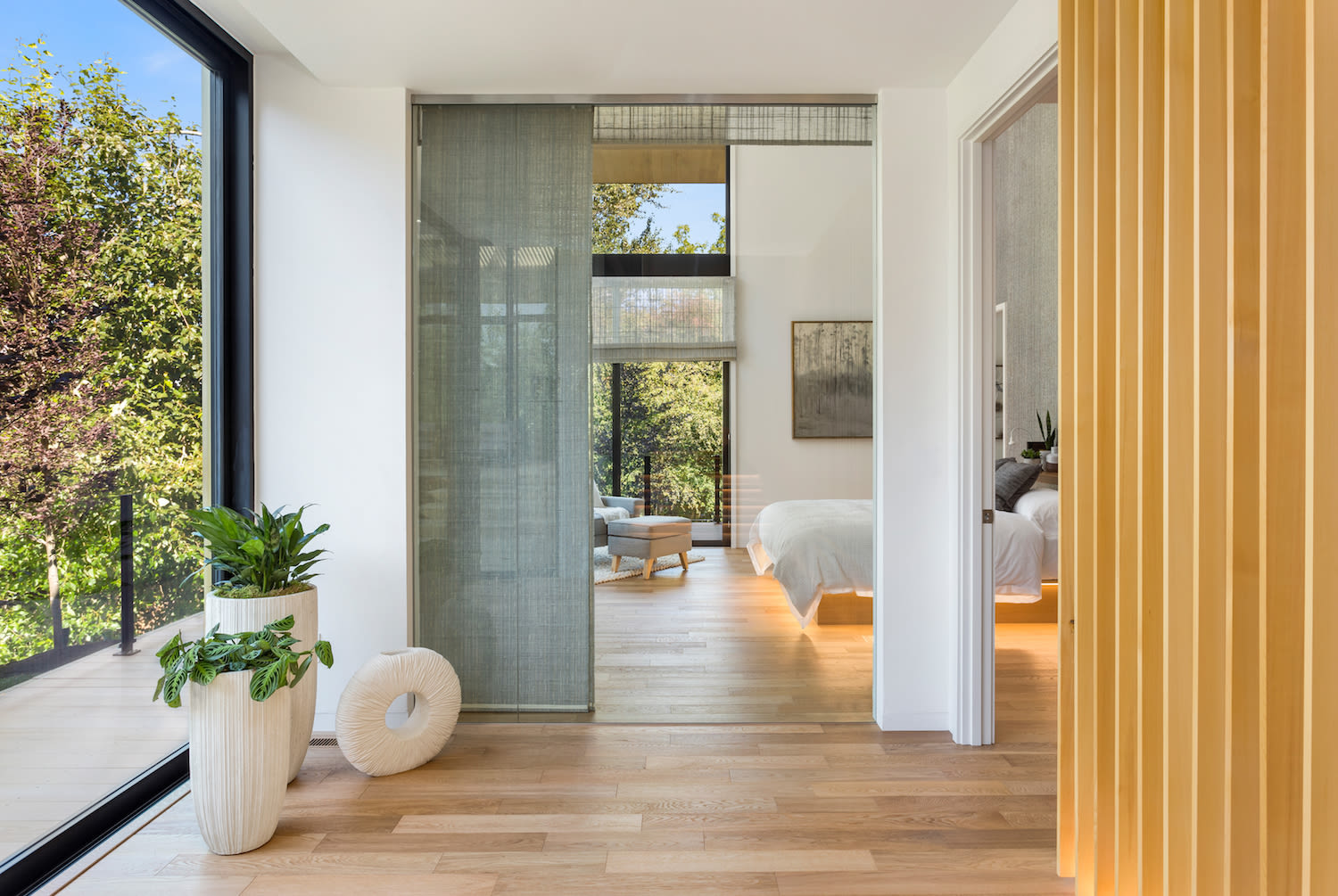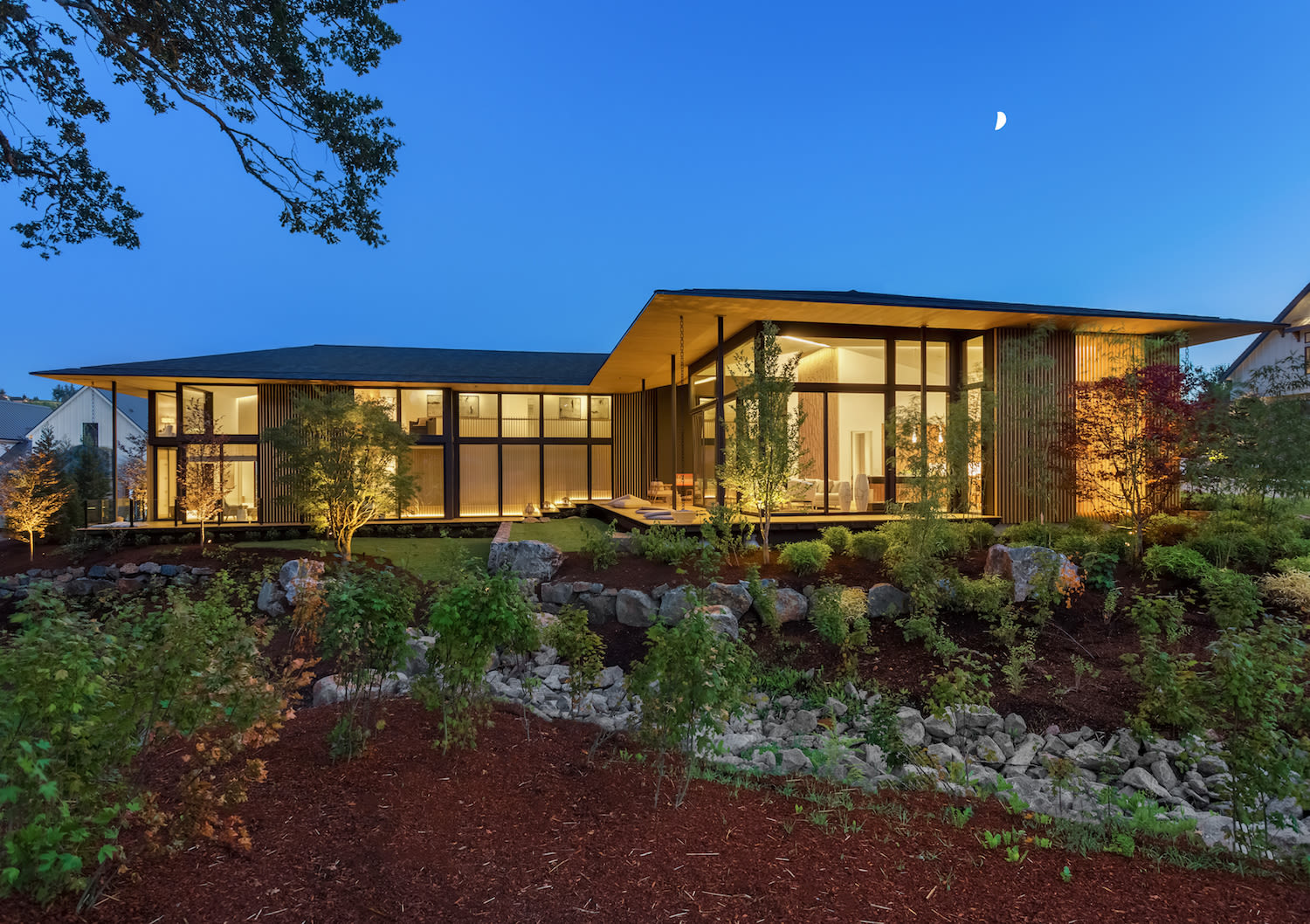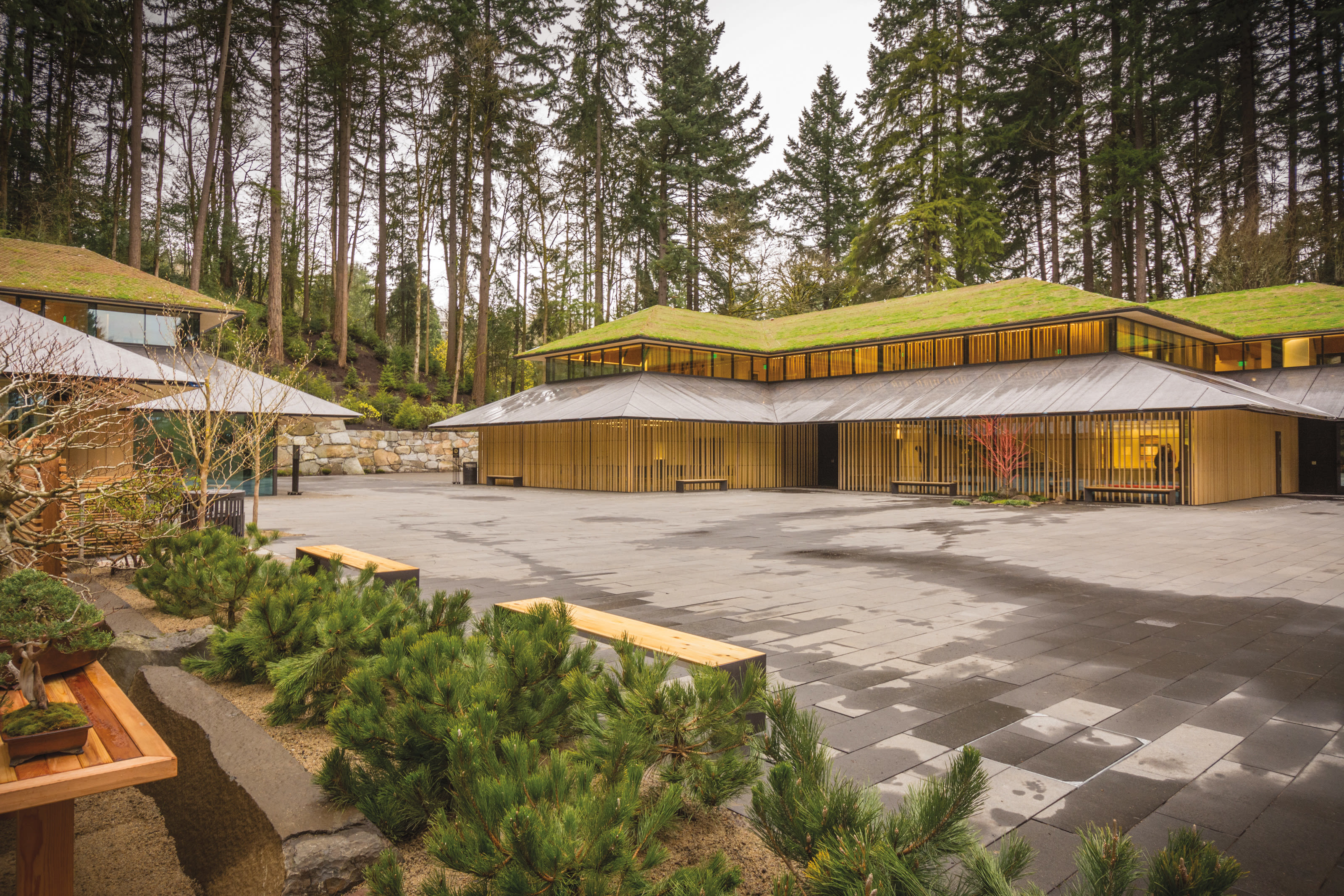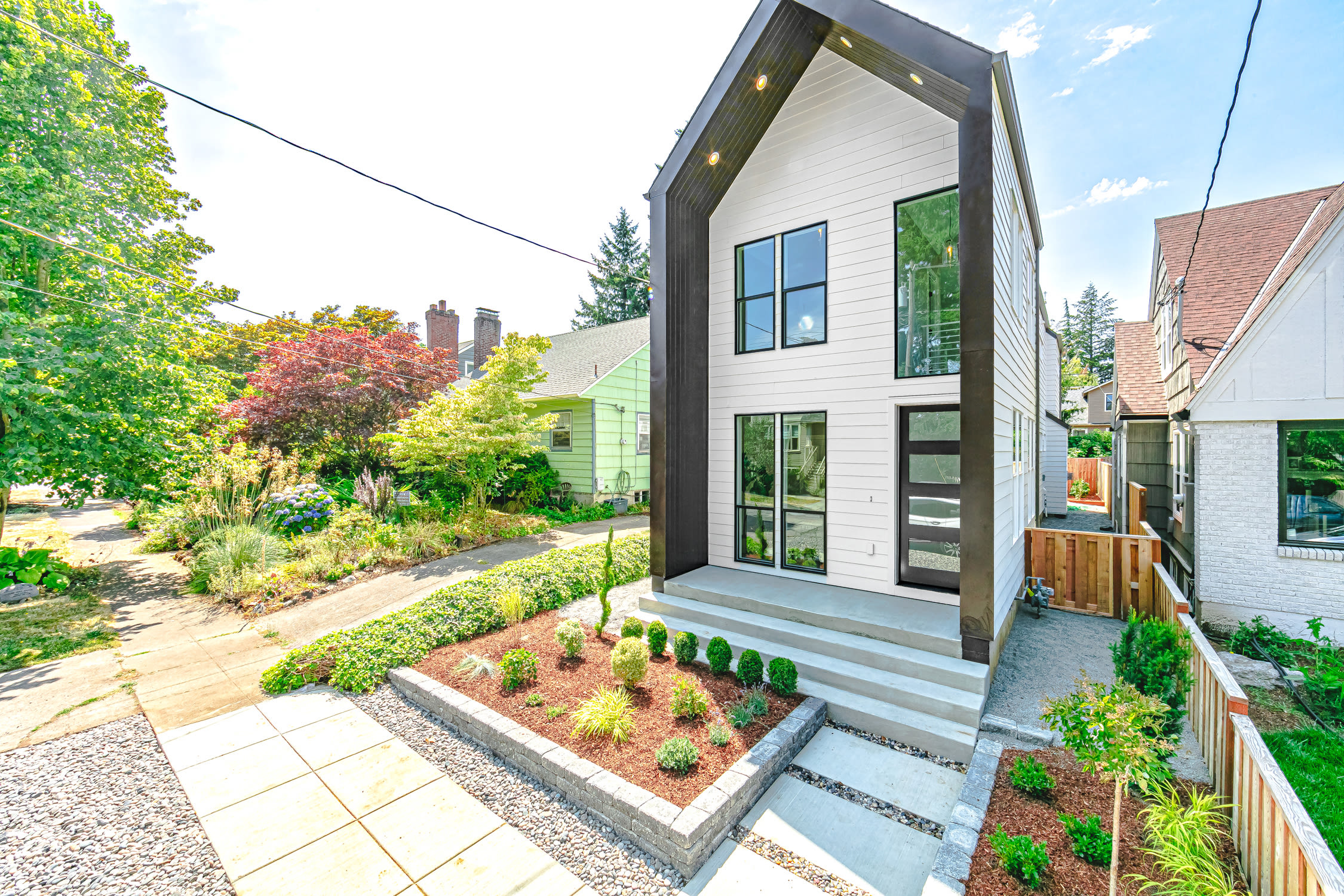Kengo Kuma's New Portland-Area Home Is a Straight-Up Stunner
Admirers of the Japanese Garden’s new Cultural Village: you may have a chance to live in a home designed by its internationally renowned architect Kengo Kuma.
Partnering with Japanese home designer Suteki, Kuma built a 4,739-square-foot home, called SUTEKI, which translates to “natural,” “comfortable,” or a sense of excellence. Constructed for Happy Valley’s Street of Dreams event this summer, the home’s standout design is meant to showcase a cross-cultural collaboration by combining elements of traditional Japanese design principles and the contemporary Pacific Northwest lifestyle.
A goal of the house is to “[strike] a balance between happiness and sustainability,” says Koichiro Hirata, group CEO of Nice Corperation, the international real estate, construction, and housing material distribution company of which Suteki is a subsidiary. Suteki chose the Portland area as the location for its first residential space because of the Hirata family’s decades-long connection to the city (namely its lumber industry), and, Hirata says, his admiration of Portland’s model of sustainability.
For Kuma, a seamless relationship between indoor and outdoor space was of paramount importance for SUTEKI’s design. Windows that meet in the corners of the kitchen, master bedroom, and second-floor family space promote this principle by sliding apart to open the end of the interior room to the outside. Exterior posts holding up the eaves are offset slightly from the corners, creating an unobstructed view between home and nature.
“In [a] typical Japanese house,” Kuma says, “every corner is open like that. If the window is just open on one side it is two-dimensional, but if we open [both sides] it is three-dimensional openness.”
Overall, the Alaskan Yellow Cedar louvres that line its street-facing exterior walls make SUTEKI stand out from its suburban neighbors. Its L-shape hugs the triangular plot it’s built on, which overlooks a creek.
“This site is amazing,” Kuma recalls thinking when he first saw the property. It also reminded the Japanese architect of his favorite house, Frank Lloyd Wright’s famous Fallingwater. “For this house I tried to create a 21st-century version of Fallingwater.”
Sadafumi Uchiyama, the Japanese Garden’s curator, served as SUTEKI’s landscape architect. His work is showcased by the floor-to-ceiling windows that make up most of the walls on the house’s creek facing side—yet another representation of seamlessness.
Kuma’s favorite element of the house is the engawa, a continuous wooden deck that lines the windowed side of the house. He calls it an “in-between” space because it is completely covered by the deep eaves, which means SUTEKI’s future occupants can sit comfortably on plush couches even throughout Portland’s famously rainy weather. An element of traditional Japanese homes that Kuma says has been lost since the invention of air conditioning and Tokyo’s increasing density, the engawa promotes a much-needed outdoor living model.
SUTEKI is only Kuma’s second home in North America—he rarely builds residential spaces anywhere—but it’s now his third building in the Portland area (others being the Cultural Village and Chef Naoko, the downtown restaurant that got a makeover from Kuma earlier this year), and he already has plans to return. Hirata announced this month that Suteki plans to join forces with Kuma again to build a second home for next summer’s Street of Dreams in South Hillsboro.
“We have been working with Portland for many years… For me this house is very important because I love [the city] and I think [it] is a really beautiful city,” Kuma says. “I like the atmosphere of Portland. It is very different from other American cities…In Portland we can feel the intimacy, and also the city is very generous to the multicultural example.”
Suteki, meanwhile, plans to build more everyday adaptions of the SUTEKI home in Happy Valley and Hillsboro in upcoming months.
